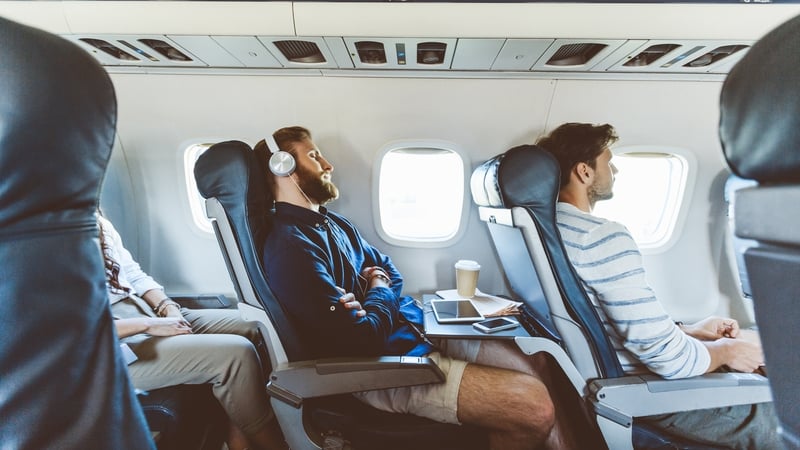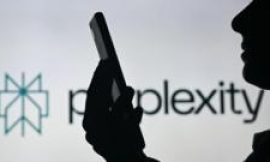Sometimes a clever new technology or service is created – but it takes decades before its full potential is realised.
That’s exactly what’s happened with audiobooks.
Because, while some might think of them as a relatively new invention, they are actually more than 90 years old.
Audiobooks first come to market in the 1930s but, because of the limitations of the technology of the time (namely the fact that a gramophone could only fit 20 minutes of audio on each side, they were at first confined to short stories and poems.
It wasn’t until 1935 that you first had an audio version of a novel – Joseph Conrad’s Typhoon – which was released in a four record set. In the same year, an audio version of Agatha Christie’s The Murder of Roger Ackroyd was also made.
Both were produced by the British Royal National Institute for Blind People – which tells you what people of the time saw audiobooks as. They were to benefit blind and visually-impaired people – but they weren’t a mass-market product.
Eventually the book on vinyl became the book on tape, and ultimately the book on CD.
But all along they were stilly fairly niche. Their main market continued to be the visually impaired and older people. Only some books had audio versions made, and even those would not have been widely available – with libraries and specialist (often phone-order) retailers being the main stockists.
But, fast-forward to today, and they have become a huge business in their own right. And they’re growing rapidly.
Britain’s Publishers Association said that, in 2023, audiobook downloads rose by 17% year on year – with 59 million titles downloaded. That’s in the UK alone.
Revenues from audiobooks there rose by 24% – also shows that the price of each audiobook has been rising, no doubt – in part – because of rising demand.
It’s hard to find a global figure, but there are estimates that the worldwide market was worth somewhere in the region of $8.6 billion last year – and it’s growing at a phenomenal rate of roughly 26% a year at the moment.
There are some projections that it will be worth $30 billion or more by 2030 – although that assumes the phenomenal growth the market has had in recent years continues every year between then and now, which isn’t guaranteed.
So what’s changed to make them so popular?
There’s been a coming together of things that has suddenly made this a great market for audiobooks.
The first important shift is the technology – it’s now a digital medium, which offers a number of advantages.
Firstly, it’s more user-friendly – you no longer have to carry around a box with six or eight tapes or CDs, and you no longer have to swap sides or discs intermittently to keep up with the story.
Now, you just hit play and listen, stop whenever you like, and then come back later and pick up where you left off.
It being digital also means it’s easier to buy new titles – it’s a click of a button rather than having to go to a shop or order by mail or phone. And it’s on your phone – so it’s probably with you all the time.
And those are the same factors that have helped to create a broader kind of audio revival – not just with music subscription services and radio, but also podcasts. That has gotten a whole new generation of people into the habit of listening to people talk – often at length – about something they’re interested in.
So the idea of listening to a book, rather than reading one, doesn’t seem like a huge departure from what they’re already doing.
And all of this is coming at a time people feel like they have less down-time, less time to themselves or – when they do have that time – they’re too tired to sit and read a book. So the now easy-to-find audiobook has become a way for them to keep up on the books they want to read while they’re going about their day – be it while they’re commuting, or doing housework, or exercising, or winding down for bed.
It’s also much easier to get an audiobook now, isn’t it?
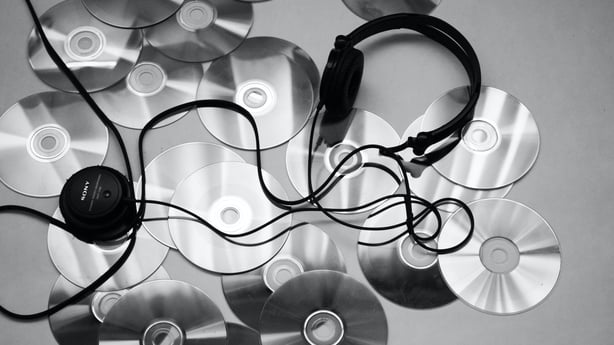
Yes the access has improved hugely – and the choice available has exploded, too.
In the past libraries might have had a limited selection of books on tape or CD – meanwhile bookshops would have had little or nothing available.
If you wanted an audiobook, you’d have to go to a specialist retailer – or buy over mail or the phone (and eventually online).
But now you can download an audiobook as easily as an app or film.
At the same time libraries here and around the world also offer a wide selection of audiobooks that you can rent digitally through platforms like BorrowBox. Project Gutenberg has a huge library of classics available for absolutely nothing – there are also free classics available on the likes of Apple Books too.
On top of that you have subscription services like Amazon’s Audible – where you pay a fee and get access to its library of audiobooks; or Spotify, which now offers 15 hours of free audiobook listening per month as part of its premium music subscription plan.
There’s a long-running magazine called AudioFile that specialises in reviews and recommendations in the audiobook space – lots of websites doing that too.
And all of this has created a cottage industry for producers and voice actors
Some of them would be well-known – like Stephen Fry, who famously narrates the Harry Potter audiobooks. That has apparently racked up 1.4 billion hours of listening on Audible alone since it was published in 1999.
Or there’s Andy Serkis, who played Gollum in The Lord of the Rings, and has also voiced a version of the book trilogy.
But big names aside, there are also many voice actors who are mainly known for their audiobook work. Like John Rafter Lee, who has won multiple Audie Awards – the audiobook equivalent of the Oscars, which has been running for nearly 30 years now.
And some of these actors are so good and so beloved that people will seek out their next listen based on the narrator, rather than the author.
How have publishers reacted to this boom in demand?

It’s fair to say that they’re no longer treating audiobooks as an after-thought or a bit of an add-on to the physical book.
The Harry Potter audiobooks started coming out in 1999 – two years after the books were first published. Nowadays big releases tend to have their audiobooks available on the same day (they tend to cost a bit more than the eBook version, too).
And in general, we’re seeing more books being made into audiobooks, and we’re seeing more focus on getting the right voice actor to narrate it.
But there’s also an interesting trend that’s growing, where publishers are really going all out in the production for some of their audiobooks – moving away from having one narrator towards having multiple, and adding in music and sound effects. They’re almost turning them into unadbridged radio plays, rather than audiobooks.
For example, the Oscar-winning director Sam Mendes has produced three audiobooks for Audible based on Charles Dickens’ works – including a version of Oliver Twist that includes Nicola Coughlan, Brian Cox and Daniel Kaluuya in the cast.
And while the Stephen Fry-narrated Harry Potters have been hugely popular, Audible recently announced that it will this year publish a new version of the book series, which will include a cast of more than 100 people.
Audiobooks for kids are increasingly popular too…
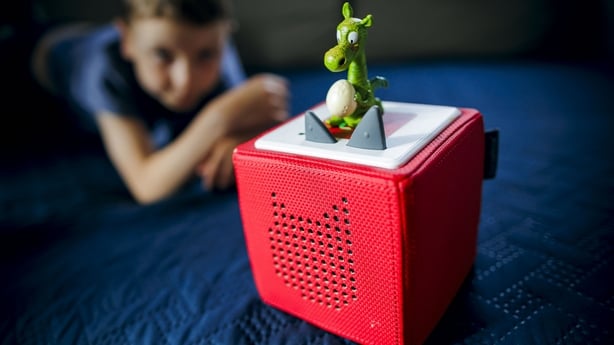
Again, not something that’s new necessarily, but there are new ways that kids are being exposed to audiobooks.
The YotoPlayer is an example – it’s a little Bluetooth speaker that can play stories from compatible cards that are sold separately. They have lots of titles available by Roald Dahl, Julia Donaldson, Enid Blyton, and there are Paddington stories and ones based on Disney characters too.
Similarly you have the Toniebox – that uses little figures rather than cards, but it’s the same idea as the YotoPlayer.
And there’s also the VoxBlocks, which almost looks like a toy smartphone with a spot for wooden blocks (that play stories) to sit.
They tend to be abridged versions of the books in question – but they’re all selling themselves as screen-free ways of keeping kids entertained, and having them engage with books more than they might have before.
And they’re again creating a habit from very young – so you have a generation of kids now growing up very used to the idea of putting on a story that they listen to while they play, or to help them to relax, or go to sleep.
Is all of this eating into physical book sales?
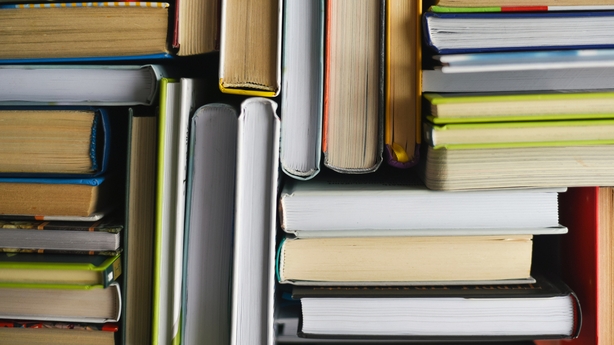
You would think it might – but that doesn’t seem to be the case.
There was a boom in the physical book market during covid, and that continued even through to the post-lockdown period.
Now it seems to have levelled off in the past year – according to the Global 50 Publishing Ranking, which measures the sales and revenues of the top 50 publishing houses in the world – sales hit almost €36 billion last year, which is up a modest 1.1% year on year.
Now there is an element of inflation in there – some publishers say they’re selling fewer books, but they’re selling each one at a higher price, which is pushing up revenue.
Some of the other big publishing houses do say that their revenues did fall last year – although sometimes that can be blamed on the specific timing of a release, or the fact that it had such a good year in the previous year, that the next one is going to look weaker in comparison.
But the long and short of it is that physical book sales are still doing quite well – and there doesn’t seem to have been any negative impact from the rising popularity of audiobooks.
There are also attempts to try to marry the two together –again, going back to Amazon, they offer a thing called ‘whispersync’ that’s meant to link up an audiobook and an ebook. The idea is that you might listen for a few chapters while you’re driving and then, when you get home, you pick up the ebook and it’s right where you stopped the audio.
Others do try to offer an alternative to that, but it’s hard to match the kind of omnipresence that Amazon has in the world of books.
And, of course, it’s not going to help you if you’re listening to an audiobook while also trying to keep up with a physical copy.
But you’ll at least be the publisher’s favourite customer given that you’ll essentially have bought two copies of the same thing.

